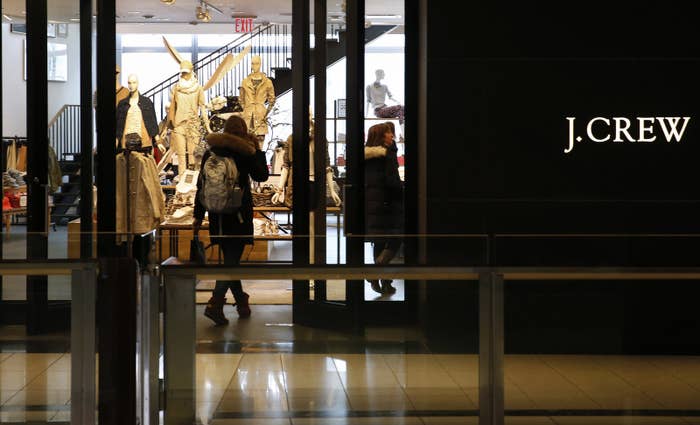
The problems at J.Crew, the preppy sportswear icon whose customers have been souring on its prices and fashions, continue to pile up: this week, its second creative director in a year resigned, the latest sign of turbulence at a company with dwindling sales and rising debts.
Somsack Sikhounmuong, who is known for having helped make J.Crew's Madewell brand a cult favorite, was promoted to a bigger job in March, replacing Jenna Lyons as the company's chief design officer. His departure — after just six months on the job, and right before New York Fashion Week — comes after a year of staff shakeups and the exit of the longtime CEO.
J.Crew did not respond to requests for comment from BuzzFeed News. But it told Business of Fashion, which first reported the news of Sikhounmuong's resignation, that it is "sad to see him leave."
"We respect his decision and wish him all the best," a J.Crew spokesperson told the news site. "His current responsibilities, which include the oversight of all product design, will be transitioned to other members of our very seasoned and talented design team currently in place."
J.Crew is dying a slow death and I am in my feelings about it https://t.co/M1VYHZOFTO
This spring, Mickey Drexler, the executive who had led the company through a dramatic turnaround years ago, stepped aside and was replaced by Jim Brett, the former West Elm CEO. Wall Street questioned whether an executive from the world of housewares could step easily into a company dedicated to clothes and fashion, and the jury is still out.
In its first quarter under Brett, the company reduced its expenses and expanded its gross margin. While sales at J.Crew stores were down 7%, according to the quarterly earnings report the company released at the end of August, sales at Madewell were up 19%, showing the strength of the company's less-expensive clothing brand.
"J.Crew sales decreased 7% to $443.1 million. Madewell sales increased 19% to $93.1 million. "
The company must now turn around its business by 2021, when its deadline to pay $250 million in debt comes up, Raya Sokolyanska, a Moody's senior analyst, told BuzzFeed News. The original 2019 deadline was extended in a deal the company cut with creditors in July, although that was just a fraction of the company's overall debt.
"The J.Crew brand is still declining," she said. "There is a lot of heavy lifting to be done on many fronts."
Its success still rests on whether the brand — which is now marketing "life-changing pants" on its homepage — can win back its customers, some of whom feel betrayed by the chain's prices. "A big reason for losing customers [is] that perception that J.Crew is too upscale," Sokolyanska added. "They really have to get to the right combination of price points, discounting, perceived value and mix of styles."
New post: J.Crew Calls These Slimming $80 Pants “Life-Changing” https://t.co/whg1KtbUdS #fashion #clothing #style
Marshal Cohen, a retail analyst with NPD Group, told BuzzFeed News that the brand's number one challenge for growth is improving the store environment, which remains critical to J.Crew.
Mark Larson, the national leader of KPMG’s retail industry practice, told BuzzFeed News that the apparel industry is undergoing a massive transformation as technology heightens customer expectations of brands and their shopping experience.
"Retail has historically been extremely competitive," he said. "With the improvements in technology, the barriers to entry have gone down more. The retailer embracing change is imperative for survival."
This overhaul of the company's ability to keep up with change is long overdue. Mickey Drexler told The Wall Street Journal in May that he underestimated the impact that the internet would have on retail. J.Crew raised prices and invested in its "luxury for all" reputation to get the brand through a long slump. But consumer trends went the opposite direction towards cheaper clothes and changing styles.
“I’ve never seen the speed of change as it is today,” he said. “If I could go back 10 years, I might have done some things earlier.”
